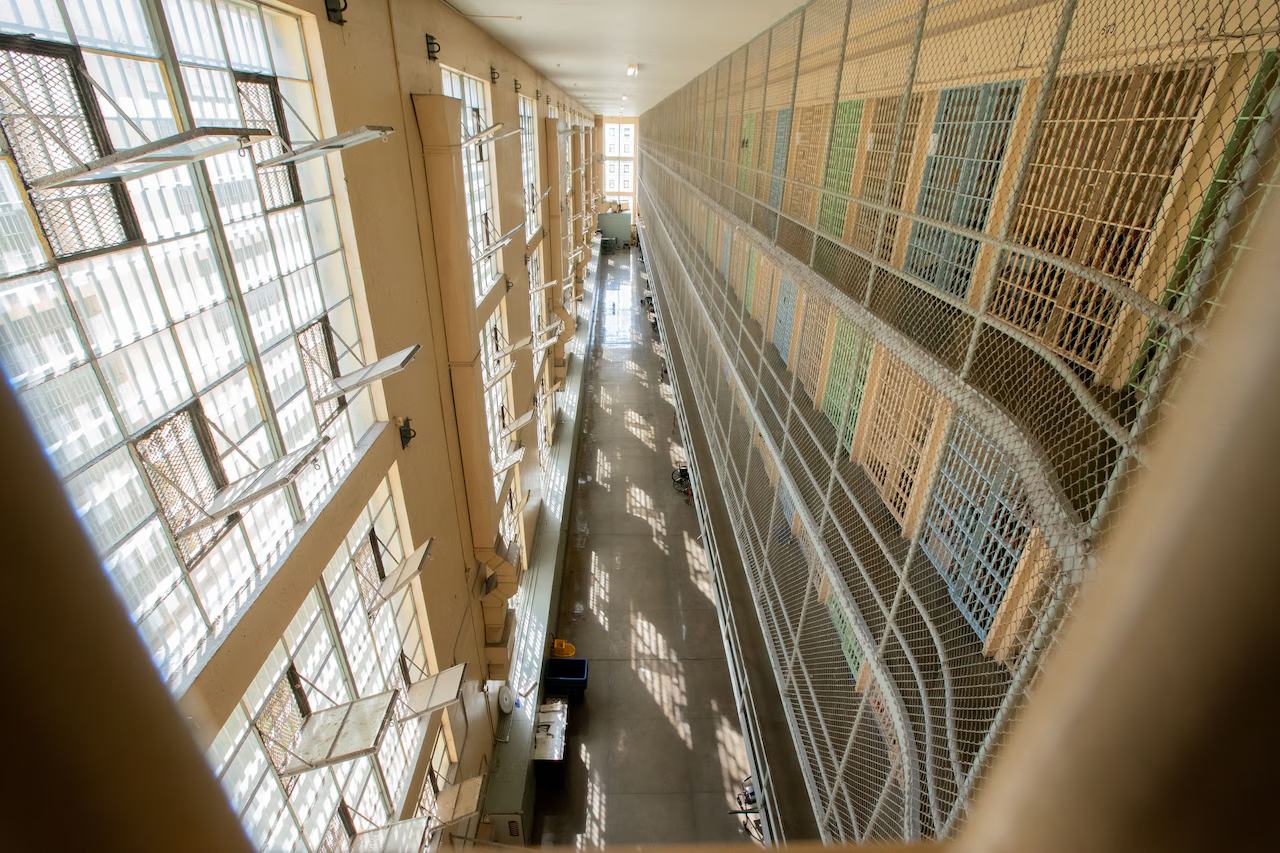On blistering summer days, the air inside Oregon State Penitentiary turns suffocating. Prisoner Reyes Miranda recalls lying awake at night on the cold concrete floor, trying to escape the oppressive heat that radiates from the metal walls of his cell — walls so hot he fears they could burn skin. Located on State Street just two miles from Oregon’s Capitol in Salem, the penitentiary has reached a crisis point. Temperatures have climbed as high as 114 degrees in some cells, sparking renewed calls to replace the 160-year-old facility that now costs the state nearly $13 million a year to maintain.
A Prison Struggling With Time
Built in the 1860s, Oregon State Penitentiary (OSP) is the oldest and second-largest correctional facility in the state. It houses around 1,900 inmates, including Oregon’s most severely mentally ill prisoners. But behind its high walls, years of decay have taken their toll. Officials describe a long list of environmental hazards — asbestos in ceilings, lead paint on walls, and buildings so deteriorated that sections are literally crumbling.
Corrections Director Michael Reese calls the prison “inhumane” for both inmates and staff. The Oregon Department of Corrections (DOC) has begun discussing, for the first time, the possibility of replacing the penitentiary entirely — a move that could cost up to $1 billion by the 2030s.
Also Read
The Cost of Keeping It Standing
The financial burden of maintaining Oregon State Penitentiary grows each year. The DOC spends nearly three times more on OSP repairs than it does on Coffee Creek Correctional Facility, Oregon’s women’s prison. Repairs are often emergency fixes: replacing leaking fuel tanks, patching broken sewer lines, or renting a temporary boiler when the main one fails.
In 2024 alone, the state paid $700,000 to rent an emergency boiler and $3.1 million to install a new one. Assistant Director Thom Martin describes the process as “putting patches on a sinking ship.”
Replacing the penitentiary would require legislative approval. But lawmakers are hesitant, knowing that any new construction would pull funds away from education, health care, and housing programs. “It’s just really early,” said State Senator Kate Lieber, co-chair of the Ways and Means Committee. “But one of the government’s mandatory duties is making sure we have an adequate prison system.”
Calls for Reform Instead of Reconstruction
Not everyone supports building a new prison. Some advocates believe Oregon should focus on reducing incarceration rather than replacing aging facilities.
Bobbin Singh, executive director of the Oregon Justice Resource Center, acknowledges OSP’s poor condition but argues that the solution lies in addressing why so many Oregonians end up behind bars. “We need to ask whether we need this many prisons — or this many people in prison,” he said.
Dave Boyer of Disability Rights Oregon adds that prisoners have a right to a “humane and hygienic environment,” but suggests that a billion dollars could be better spent on mental health and addiction treatment programs to prevent incarceration in the first place.
A Storied and Troubled History
The penitentiary’s history is as dark as its crumbling walls. Its halls once echoed with the footsteps of condemned men; between 1904 and 1997, Oregon executed 58 prisoners here. The last execution chamber now sits empty — Governor John Kitzhaber suspended the death penalty in 1997, and the state officially disbanded death row five years ago.
Throughout its history, the prison has witnessed riots, escapes, and tragedy. One of the most infamous incidents occurred in 1902 when outlaws Harry Tracy and David Merrill escaped after killing three guards. In the late 1960s, a riot involving more than 700 prisoners drew national attention and forced a complete overhaul of prison operations.
Despite its grim legacy, OSP has developed a few rare bright spots. In recent years, inmates built a Japanese garden within the walls — a tranquil patch of green that contrasts sharply with the surrounding concrete.
Crumbling Walls and Fading Paint
A tour through the penitentiary reveals the depth of its decline. Visitors must pass through four massive gates before entering a maze of yellow-painted buildings. Inside, cellblocks rise several stories high, filled with narrow, metal cells that trap heat in summer and cold in winter. Some doorways are too narrow for wheelchairs, forcing disabled inmates to navigate difficult terrain.
The recreation hall — once a 19th-century brick factory — still bears the stamp “convict made” on its surviving bricks. Now, those same bricks crumble into red dust, the roof leaks during rainstorms, and sections of insulation hang in tatters. Assistant Superintendent Curtis Wagner notes that the facility has gutters inside the building to keep rainwater off the basketball court.
Elsewhere, in what used to be death row, about 80 inmates with severe mental illnesses now live in near-total isolation. Their cells, made of dense metal mesh, restrict both airflow and light. “They don’t even know what time of day it is,” said Martin. “They can’t see the sun.”
Heat, Health, and Human Cost
The most urgent concern today is temperature. OSP is one of three Oregon prisons with little or no air conditioning. In the upper tiers of its metal-and-concrete blocks, the heat becomes unbearable. Counselors and guards struggle alongside inmates to endure sweltering conditions.
Shelby Butler, a prison counselor, described working in 100-degree heat with only small desk fans for relief. “Sometimes I go sit in my car just to feel air conditioning,” she said.
Elena Martinez, president of the Association of Oregon Corrections Employees, says workers face “miserable” conditions every summer. “We fix something and two more things break,” she said. “That place should be a museum.”
Nationally, the issue of extreme heat in prisons has gained attention. In Texas, where most prison beds lack air conditioning, lawsuits have already been filed alleging cruel and unusual punishment. Experts like Michele Deitch from the University of Texas note that climate change has made these issues impossible to ignore. Many prisoners, she says, are older or have health problems that make them particularly vulnerable to heat-related illness. In Oregon, about 18% of inmates are over 55.
Life Inside the Walls
Despite the conditions, inmates find ways to survive. Miranda, who has spent 38 years inside OSP, says he keeps ice cubes against the walls of his cell to cool it down. Small fans, sold at the prison commissary for $12.56, barely stir the air. Yet, he says, he tries to keep his spirit intact. “People, despite how depressing the circumstances are, still find a way to rise above that,” Miranda said.
Outside, the penitentiary functions like a grim miniature city — a place with its own routines, its own rules, and its own quiet resilience. Men line up for medication, others circle the yard beneath the watchful eyes of guards in 1950s-era towers. Lunch is served in a cavernous hall: chicken salad sandwiches and minestrone soup.
But the cracks — both literal and metaphorical — are widening. Each passing summer makes clear that Oregon’s oldest prison can’t withstand another century of use. Whether the state chooses to rebuild, repurpose, or close it, one fact is undeniable: the Oregon State Penitentiary stands as both a relic of the past and a mirror reflecting the urgent moral and financial questions of the present.












